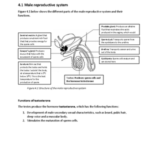Understanding Human-Environment Interactions: Impact, Examples, and Sustainable Solutions

Introduction: The Interconnectedness of Humans and the Environment
Human-environment interaction describes the ways people depend on, adapt to, and modify their natural surroundings. These interactions shape societies and ecosystems worldwide, influencing everything from resource availability to climate patterns. Understanding this relationship is crucial for developing sustainable solutions that balance human needs with environmental health. [1] [2]
Types of Human-Environment Interactions
Experts typically group human-environment interactions into three main categories:
- Dependence : Relying on natural resources for survival and economic activity.
- Adaptation : Changing behaviors, technologies, or infrastructure to suit environmental conditions.
- Modification : Actively altering the environment to meet human needs, often with significant consequences. [4]
Dependence on Natural Resources
Human societies depend heavily on the environment for essentials like food, water, energy, and raw materials. For example, communities may source water from local rivers, use forests for timber, or rely on fertile land for agriculture. In our globalized world, this dependence often stretches across continents, as people use products and resources originating from distant ecosystems. This interconnectedness means our daily choices can have far-reaching environmental impacts. [4]
Practical Steps: To use resources sustainably, consider:
- Choosing products made from renewable materials.
- Supporting local agriculture and businesses to reduce transportation emissions.
- Being mindful of energy and water consumption at home and work.
Adaptation: Living with the Environment
Humans have always adapted to their environments, from building homes on stilts in flood-prone areas to inventing drought-resistant crops. Adaptation can be traditional, like indigenous knowledge of local weather patterns, or technological, such as the development of air conditioning and water-saving irrigation. As climate change alters ecosystems, adaptation is more important than ever. [4]
Examples:
- Planting diverse crops to withstand changing weather.
- Constructing buildings to withstand hurricanes or earthquakes.
- Implementing rainwater harvesting systems in arid regions.
How to Access Adaptation Resources: Many local governments, agricultural extension offices, and environmental organizations offer guidance and support for adaptation strategies. You can search for ‘climate adaptation programs’ or contact your county’s Cooperative Extension Service for personalized advice.
Modification: Changing the Environment
Modification involves direct changes to the environment, such as clearing land for agriculture, building cities, or damming rivers. While these changes can boost economic growth, they often have unintended consequences like habitat loss, pollution, and resource depletion. Recognizing these impacts is the first step toward more sustainable modification practices. [1] [2]

Source: textstudio.com
Typical Examples:
- Urban expansion replacing natural habitats with roads and buildings.
- Deforestation for timber and agriculture.
- Industrial pollution affecting air and water quality.
Actionable Guidance: To minimize negative impacts:
- Participate in local conservation efforts.
- Advocate for green urban planning and sustainable development policies.
- Support companies with verified environmental certifications.
Real-World Examples of Human-Environment Interactions
Deforestation
Forests are often cleared for agriculture, urban development, or resource extraction. This can lead to loss of biodiversity, soil erosion, and disruption of water cycles. However, sustainable forestry practices and reforestation efforts can help restore balance. [1] [2]
Case Study: In Brazil, large-scale deforestation in the Amazon has prompted international efforts to promote sustainable land management and support indigenous land rights. [5]
How to Get Involved: If you want to support forest conservation, consider donating to or volunteering with non-profit organizations dedicated to reforestation and habitat protection. You can also look for certified sustainable wood products when making purchases.
Energy Use and Resource Extraction
Societies extract and use energy from both renewable sources (like solar and wind) and non-renewable sources (such as coal, oil, and natural gas). While renewable energy is less harmful to the environment, non-renewable energy use contributes significantly to pollution and climate change. [1] [3]

Source: tumblr.com
How to Reduce Your Impact: You can lower your carbon footprint by:
- Switching to renewable energy providers where available.
- Improving home insulation and energy efficiency.
- Choosing public transportation, cycling, or walking for short trips.
If you are interested in switching your energy provider to a greener option, contact your local utility company or search for ‘renewable energy programs’ in your area for available services and incentives.
Water Use and Management
Water is essential for life, but overuse and pollution threaten supplies in many regions. Agriculture, industry, and household use place high demands on rivers and aquifers, sometimes leading to scarcity. [1]
Practical Steps: To conserve water, consider:
- Installing low-flow faucets and toilets.
- Collecting rainwater for irrigation.
- Repairing leaks and using water-efficient appliances.
For information on local water conservation programs, check your city or county government website or your municipal water provider’s customer service.
Urban Expansion
As cities grow, natural landscapes are transformed into residential and commercial areas. Urbanization can offer economic benefits and improved services but also causes habitat loss, increased pollution, and greater strain on resources. [1] [3]
Alternative Approaches: Sustainable urban planning, such as creating green spaces and investing in public transportation, can help balance development with environmental protection. You can get involved by attending city council meetings, joining local advocacy groups, or providing feedback during public comment periods.
Tourism and Environmental Impact
Tourism can support local economies but sometimes causes environmental harm through overuse of natural areas, pollution, and disruption of wildlife. Responsible tourism prioritizes conservation and supports communities. [3]
How to Practice Responsible Tourism:
- Choose eco-certified travel companies and accommodations.
- Follow local guidelines when visiting parks and protected areas.
- Support businesses that give back to local communities and ecosystems.
Challenges and Solutions
Many negative impacts of human-environment interaction can be reversed or minimized through sustainable practices, technological innovation, and policy change. Key challenges include balancing economic growth with conservation, addressing climate change, and ensuring equitable access to resources.
Solutions:
- Adopting renewable energy and efficient technologies.
- Implementing sustainable agriculture and forestry practices.
- Promoting education and community engagement on environmental issues.
- Supporting policies that protect ecosystems and vulnerable populations.
Individuals, businesses, and governments all play crucial roles. For example, many communities now have recycling programs and incentives for green energy. To get involved, you can search for local sustainability initiatives or contact relevant government agencies for information on available programs and resources.
Key Takeaways
Human-environment interactions are complex and multifaceted. By understanding how we depend on, adapt to, and modify our surroundings, we can make more informed decisions that benefit both people and the planet. Sustainable solutions are available, but require active participation and ongoing education. For further support, consult environmental organizations, local government offices, and reputable online resources for the latest research and actionable advice.
References
- Tutor Hix AI (2025). What Is Human-Environmental Interaction? (Definition & Examples).
- Vaia (2022). Human-Environmental Interaction: Definition.
- Utopia (2022). Human-Environment Interaction: Definition & Examples.
- Green Citizen (2025). Human Environment Interaction: Our Impacts Explained.
- Forest Founders (2025). Pros and Cons of Humans Interacting with the Environment.






